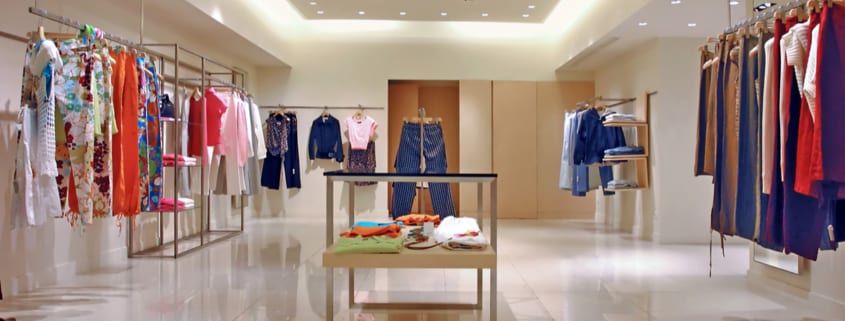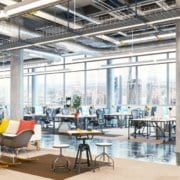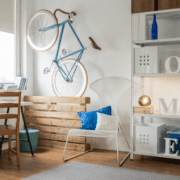Are Inventory-Free Showrooms the Secret to Retail Success?
Retail closures and bankruptcies continue to make the news, ever since the retail apocalypse first started taking victims in 2010. By 2026, it’s estimated another 75,000 stores will close. Retailers are struggling to stay afloat due to mounting debt, lack of adaptability, and rising pressure from e-commerce retailers. Retailers that have announced store closings by the end of just 2019 include Charming Charlies, Payless, Sears, and Kmart.
With the uncertain state of brick-and-mortar retail, a trend has emerged with the hopes of breathing new life into retail stores; inventory-free showrooms. Similar to the concept of mattress and furniture showrooms, these spaces are designed for shoppers to freely test, try, and touch the items on display. The major difference between showrooms and traditional retail stores is that once purchase decisions are made, items are scheduled for home delivery instead of the direct “take-home” option.
Both traditional and e-commerce retailers are beginning to embrace the showroom concept, and with proven results to support their decision. A survey conducted by customer experience company, WD Partners, revealed that 45% of consumers react positively to these new showroom stores. This relatively high percentage, even in its infant stage, could be an indication that inventory-free showrooms have the potential to become more than just a fleeting fad.
Read ahead to learn more about how retailers are using the emerging showroom trend to push back against the ongoing retail apocalypse.
Placing Customer Experience at the Forefront of Retail
Today, consumers demand more than just a traditional transaction. Rather, they desire a memorable experience each time that they visit a retailer. It is this experience that attracts shoppers and influences them to maintain loyalty to a brand. This factor is so important that 42% percent of consumers are willing to pay more for a friendly, welcoming experience. Additionally, 52% of shoppers are willing to spend more for a speedy, efficient experience.
Retailers like Nordstrom, MM. LaFleur, Modcloth, and Nike, and Target have successfully used showrooms to test markets, introduce new audiences to the brand, and encourage consumers to interact with products. Each of these companies have used showrooms to produce high impact, compelling experiences, which is critical since shoppers cannot make purchases on the spot.
A natural, laid-back environment is one of the ways that showrooms create compelling experiences. This type of atmosphere allows shoppers to fully immerse themselves within the brand without the pressure to make a purchase. Customers are encouraged to take as much time as they need to browse the showroom, and because employees are not focused on getting shoppers in and out of a checkout line, they can better provide product knowledge and help customers find exactly what they need.
Attracting Millennial Consumers
Millennials currently have a buying power of $1 trillion annually, but it is predicted to increase to $1.4 trillion annually by 2020. With such a high amount of buying power, the Millennial cohort is highly sought after by retailers. However, traditional retailers have consistently struggled to adapt to the trends and experiences that this cohort seeks. And while Millennials have not abandoned in-store shopping altogether, 71% of them admit that an enhanced retail experience would increase their number of in-store visits and purchases.
Experiences are undeniably valuable to this generation, so showrooms developed with them in mind combine sensory experiences and on-trend aesthetics. With this type of design, at least one of the five senses are intended to be triggered to accommodate this cohort’s varying personalities. Ultimately, the goal is to create such an enjoyable experience that they are led to make a purchase upon leaving the showroom.
Although 67% of Millennials prefer online shopping, a whopping 82% still believe that brands should have physical locations in addition to an online presence. In essence, the Millennial consumer wants the best of both worlds, and showrooms are better positioned than traditional brick-and-mortar retailers to fulfill those desires.
CRE Implications
Reduced Footprints
Because of showrooms’ inventory-free model, retailers are able to reduce their footprint by renting smaller spaces. For example, MM. LaFleur’s showroom operates with under 1,000 square feet. However, it is still able to provide shoppers with plenty of space and even houses enough room for six dressing rooms.
Additionally, the amount of back-office storage space needed by showrooms is significantly less than that of traditional retailers, who are constantly shifting their inventory from warehouses to stores, and then from one store to another. Showrooms allow companies to have one centralized warehouse, creating more efficient operations and logistics.
Cleaner Aesthetics
Consumer’s preference for “breathing room” and “simplicity” clearly translates into the cleaner, more simplistic aesthetics found in showrooms versus that of traditional retail stores. Apple-inspired interior designs, such as hardwood floors, museum-like gallery exhibits, and sleek monochromatic wall finishes, can be found throughout showrooms. Clean, modern designs like these allow shoppers to browse freely and effortlessly without having to navigate through clutter.
Read The Pop-Up Shop Solution to the Retail Apocalypse to learn more about retail trends that present potential solutions to the retail apocalypse.











